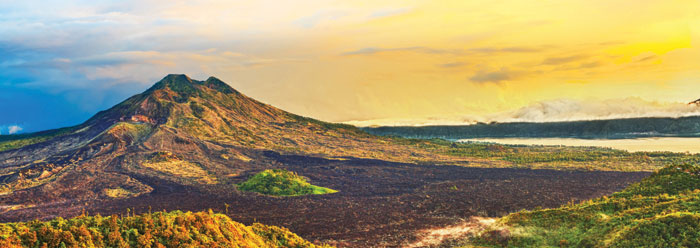Creation and evolution studies are limited to observations in the present, but both speculate about unseen events of the long ago past. Mainstream scientists typically use the principle of uniformitarianism to guide their study, assuming that past processes were the same as those possible today and that “the present is the key to the past.” Creation scientists unapologetically employ the Word of the Creator, the Bible, to guide their investigation into the past. Scripture doesn’t give us all the details, and so there is much room for research. But revelation is the true key to the past.
According to Scripture, in the beginning things were, to God’s eyes, “very good” (Genesis 1:31). They must have been very different from things today, because in our world things are not always so good. They were certainly without sin, and thus without the “wages of sin” (Romans 6:23), which is death. Creation was perfect in every respect in a perpetually optimum state of operation, working under a similar but different set of laws from that of today.
The first instance of disobedience to God and the rejection of His authority over creation resulted in the Curse of Genesis 3, which ruined the original perfection of all things. Today, all living or inanimate things undergo a ubiquitous deterioration, continually spiraling in on themselves. We still observe hints of the original perfection, but only hints, marred by sin and its effects.
After the Curse, processes operated in ways we would recognize, and from that time until the present, uniformity of natural law has reigned. We can be certain that every time an object is dropped, gravity will pull it down. Every time wood is burned, heat will be released. Every time parts move, friction will be generated. In the present time, the constancy of natural law can be assured.
How things operated in the beginning, we can only imagine. Thus, the confidence we have in present natural law must not be over-applied into the past before the present laws of nature were fully enacted—before God’s “very good” creation was altered by man’s sin and the resulting penalty. It’s almost like a curtain was drawn between then and now, and we can only see through it dimly.
A similar curtain was drawn at the time of the great Flood of Noah’s day, an episode during which present processes were operating, but at greatly altered rates and intensities and on wide scales. Catastrophic flood and tectonic processes acted on regional—if not continental or global—scales, while today’s uniform processes affect only local areas (stream and lake beds, beach fronts, tidal zones, hurricane paths, etc.). The great Flood permanently altered the entire earth.
The Flood’s survivors were promised there would never again be such a flood. The Flood of Noah’s day was totally out of our experience, and we can hardly imagine it. The imprint it left cannot be avoided and can be seen everywhere on the planet.
In total, three curtains have been drawn over the past. The first was drawn at the end of the six days of creation, when God “finished” His creating and making, at which time He prohibited further creation or annihilation of either matter or energy. He seldom thereafter used creative processes, and we have no access to them. The second was at the Curse, when He initiated the death of all living things and deterioration of all non-living systems. Finally, the third curtain was evident at the great Flood, when processes used were acting at greatly accelerated rates, scales, and intensities—“off the scale” of today’s processes.
Uniformity can address none of these three world-altering episodes and, thus, cannot arrive at ultimate truth. Furthermore, if we ignore these great historical events, we cannot expect to arrive at truth regarding earth’s history.
* Dr. Morris is President of the Institute for Creation Research.
Cite this article: Morris, J. 2012. Observing Creation. Acts & Facts. 41 (9): 15.














